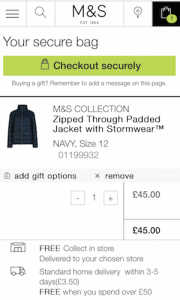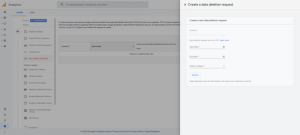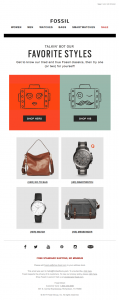
It doesn’t matter if you’re just starting your first blog or are a veteran blogger, there will come a time where you will have writers block. It could be because it’s Friday afternoon and your brain has already started the weekend, or, it could be that you can’t figure out what you should write about. Often times people stick to the same blogging style for every post forgetting that there are so many types of blog posts that can help them mix things up. Not only will mixing up the blog posts help conquer your writers block (I’ve even included tips below on how you can pass off your writing duties to somebody else) but changing things up will also keep your readers engaged since you won’t be so predictable from post to post.
Instead of listing every single type of post imaginable (the list would go on and on), I’ve included a list of my favorites blog post types below that are truly beneficial for increasing your visits and leads. Here’s how.
1. Lists
You see these types of blogs posts all over the internet: Top 10 YouTube Videos of 2015; 10 Reasons Everybody is Talking About Game of Thrones; 5 Holiday Recipes You Have to Try…and so on. It’s not a coincidence, there’s a reason for this. Lists are a great wait to streamline information in a digestible and easy-to-share format. When people don’t have time to sit down and read a full blog post, they can easily skim a list-type post and get all of the information they need. Lists are great traffic builders and are more likely to go viral than other types of posts.
Lists are great for increasing traffic to your site since people are more likely to share this type of content. Bottom line? People like reading lists (case in point, you’re reading one right now).
2. How To’s
Aside from checking Facebook and email multiple times a day, many people get online to discover how to do something, whether it be baking a pie or tying a tie. They’re looking for solutions to their problems. If they see you have the answer they’re looking for, they’re likely to click on the link to your site to read the post. How To’s are also great for lead generation. By sharing your knowledge with your persona, they’ll see your industry knowledge and will appreciate that you share that knowledge with them. The more you help them, the more they’ll want from you, and the more they’ll download your content.
In addition to writing your knowledge on the topic, videos are a great way to visually show your audience how something is done.
3. Checklists/Cheat Sheets
I love checking items off a list. Don’t you? There’s something satisfying knowing you’re accomplishing a task. Providing a checklist for your audience gives them a step-by-step breakdown of what they need to do to achieve a goal. This differs from How To’s in that checklists don’t leave any room for interpretation. Checklists and cheat sheets can serve as a quick reference guide for your audience when time is limited. For providing this useful resource, your audience likely want to consume and download more content of yours.
4. Infographics
Although infographics aren’t the best tool for lead generation, they are a fantastic resource for driving visits to your site and raising awareness. They’re easy to digest, informative, and entertaining. Plus, they’re a nice break from your typical written blog post. Additionally, more often than not, people will place an embed code near the inforgraphic to make it easy for people to embed it on their site, increasing the odds for shareability and more links to your site. If you develop an infographic, definitely include the embed code to take advantage of the benefits. Let’s face it, who doesn’t love a good infographic?
5. Interviews
Interview posts are perfect for when you want to develop a piece of content but don’t have time to create it personally. Pick an industry influencer, customer, or anybody that would be relevant to your buyer persona and conduct an interview with this person. The easiest way to do this is to send that person a list of questions, have them fill out a written response, and then publish it to your website…voila! This type of post has a lot of sharing potential to drive traffic to your site because there’s a good chance the interviewee will want to share the content with his/her networks as well. It show’s there expertise and mixes up your blogging style at the same time. A win-win.
6. Guest Blog Posts
Guest blog posts are beneficial because you get a fresh perspective on your content aside from your own. There are multiple benefits for both you and the guest blogger.
Benefits for You:
- Connects you with a new audience
- Gives a fresh perspective that’s different from your own
- Increases your opportunities for networking
- You don’t need to create the content but will still be able to publish as you would a regualr post to keep your blog schedule consistent
Benefits for the Guest Blogger:
- Increases exposure
- Adds to credibility
- Increases the number of inbound links driving to their site (great for SEO)
- Grows social media reach
- Increases networking opportunities
Be sure to submit guidelines to your guest blogger so that they keep with the tone of your blog, and remind them, no self-promotion on your site. It should be educational.
7. Newsworthy Posts
Extra Extra! Newsworthy posts are intriguing to audiences because of their timeliness to current events. People want to know what the buzz is all about and are more apt to click on your post when they think it’s “bringing them in the know.” If something important happened within your industry, it’s important to let your buyer personas know about it. If they see that you are current with all of the latest trends in the industry, they’ll see you as a true expert and will begin to see you as an authority in your field to go to for the latest trends and news. The more a person trusts you as an expert, the more likely they’ll be to buy from you.
8. Personal Stories
If I could have one superpower it would be to be a phenomenal storyteller. Why? Great storytellers can engage people no matter what the topic is about. The more you can connect with somebody on a personal level, the more likely they’ll be to trust you. From a business perspective, that in turn could lead to them buying from you. Note however, don’t get personal stories confused with self promotion. Self promo is the last thing you want to do in a post. The point of the personal story is to establish a human aspect to the blog and strike an emotional chord with your audience, but the post should still be educational. Ask yourself “what does the reader gain from this?” If it’s valuable to your audience, publish it. If not, it’s time for a rewrite.
9. Case Studies
Have you ever tried to tell a friend what a great singer you are (or whatever talent you have) and they nod politely but don’t think twice about it? But then when you sing for that friend and they hear your amazing voice they are blown away and want to hear more? There’s a key difference between somebody telling you something, and showing you, which is where case studies come in. Case study blog posts are great for lead conversion. They show real life examples of a topic that is valuable to your niche. They’ll be more apt to believe that you know what you’re talking about when they see examples like these, and will be more likely to turn into a customer.
As mentioned, these are just a few of the many types of blog posts. Which of your favorites would you add to this list?
(215)








